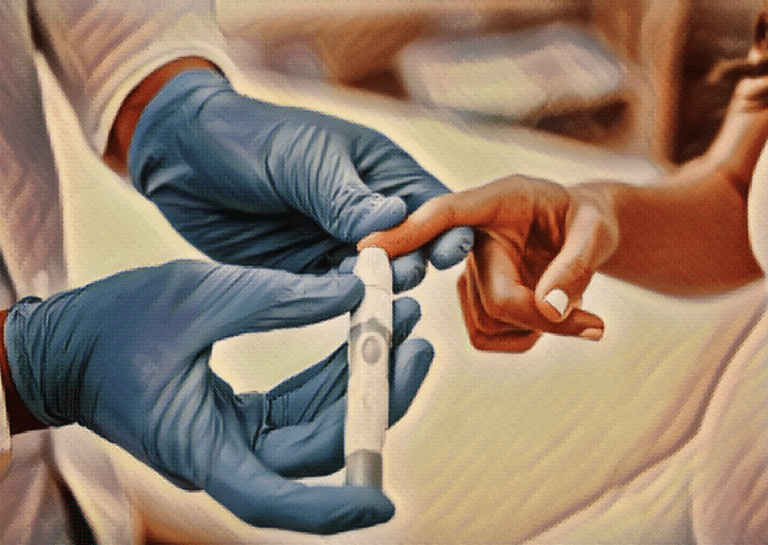Diabetes Mellitus (commonly referred to as simply ‘diabetes’) is a chronic metabolic disease that affects the way your body produces and responds to insulin. Insulin is a hormone produced in the pancreas that controls the level of glucose (sugar) in the blood. Diabetes, therefore, causes unstable blood sugar levels which can have serious health risks if left untreated.
This article contains information relating to the risk factors, symptoms, and management of diabetes in children and adolescents.
Table of contents
Types of diabetes
There are 2 types of diabetes:
- Type 1 diabetes — Type 1 diabetes is the most common form of the condition in childhood, accounting for 80 percent of diagnoses for patients under 19 in the US. Seventy-five percent of cases are identified in childhood. Type 1 diabetes is characterized by absolute insulin deficiency from the destruction of pancreatic beta cells, meaning that the pancreas is unable to produce any insulin.
- Type 2 diabetes — Type 2 diabetes is far more common in adults than children and is the most common type overall. However, the past 30 years have shown that this type is becoming more common in children and adolescents and is linked to the rise of childhood obesity. It is distinct from type 1 diabetes in that it is characterized by insulin resistance rather than insulin deficiency. This means that although the pancreas can produce some amount of insulin, the body does not respond well and cannot use it properly.
Risk factors
The risk of a child developing diabetes can be influenced by environmental and genetic factors. Between 2001 and 2009 in 5 areas of the United States, the prevalence of both type 1 and type 2 diabetes among children and adolescents increased.
Type 1 risk factors
- Family history of type 1 diabetes
- Obesity
- Exposure to viruses
- High birth weight
Type 2 risk factors
- Family history of type 2 diabetes
- Obesity
- Female gender
- Specific racial/ethnic groups — Native American, African American, Hispanic, Asian American, and Pacific Islander.
- Maternal undernutrition/gestational diabetes
- Low birth weight
Symptoms
The presentation of symptoms is largely the same for type 1 and type 2 diabetes. However, type 1 diabetes symptoms can appear suddenly while type 2 develops over a longer period of time, sometimes years. Common symptoms of both types of diabetes include [5]:
- Frequent urination, particularly during the night
- Constant thirst and dry mouth
- Unexplained weight loss
- Fruity smelling breath
- Lethargy
- Increased appetite
- Blurred vision
- Slower healing of cuts and scrapes
Diagnosis
The process of diagnosing diabetes involves identifying abnormalities in the body’s glucose metabolism, which is how the body breaks down carbohydrates into sugars. Doctors will test the glucose level in blood samples taken at random, taken during a fasting period, and taken 2 hours after the consumption of glucose.
Another common test they will carry out is a hemoglobin A1C test which measures average blood sugar levels over the previous 10 to 12 weeks. However, the A1C test is less definitive for children than it is for adults and might not prove useful for diagnosing diabetes in children.
Once diabetes is diagnosed, doctors must determine whether the condition is type 1 or type 2. Understanding which type of diabetes is present is crucial for accurate treatment and management. This can be a diagnostic challenge because of atypical characteristics or because the symptoms and signs for both types can sometimes overlap. There is no specific test to distinguish between type 1 and type 2 diabetes.
Management
Managing diabetes can be a difficult adjustment for parents and families and is an ongoing process that requires training and education. As children grow older, they will need to be educated on how to manage their illness and take care of their general wellbeing while living with diabetes.
The management of diabetes involves measuring blood sugar levels, administering insulin, and identifying and treating hypoglycemia (low blood sugar) and/or hyperglycemia (high blood sugar). Monitoring a child’s diet is also an important part of diabetes management and parents must learn to manage the timing of meals and the carbohydrate content.
Doctors and specialists will work with patients and families to manage the child’s condition over time. A comprehensive education and treatment plan throughout childhood and adolescence will help children confidently manage their condition and improve their quality of life.
References
- Beck J, Greenwood DA, Blanton L, et al. 2017 National Standards for Diabetes Self-Management Education and Support. Diabetes Care 2017; 40:1409.
- Dabelea, D., Mayer-Davis, E. J., Saydah, S., Imperatore, G., Linder, B., Divers, J., Bell, R., Badaru, A., Talton, J. W., Crume, T., Liese, A. D., Merchant, A. T., Lawrence, J. M., Reynolds, K., Dolan, L., Liu, L. L., Hamman, R. F., & SEARCH for Diabetes in Youth Study (2014). Prevalence of type 1 and type 2 diabetes among children and adolescents from 2001 to 2009. JAMA, 311(17), 1778–1786. https://doi.org/10.1001/jama.2014.3201.
- Quinn M, Fleischman A, Rosner B, et al. Characteristics at diagnosis of type 1 diabetes in children younger than 6 years. J Pediatr 2006; 148:366.
- American Diabetes Association (2021). 13. Children and Adolescents: Standards of Medical Care in Diabetes-2021. Diabetes care, 44(Suppl 1), S180–S199. https://doi.org/10.2337/dc21-S013
- Mayer-Davis EJ, Lawrence JM, Dabelea D, et al. Incidence Trends of Type 1 and Type 2 Diabetes among Youths, 2002-2012. N Engl J Med 2017; 376:1419.
